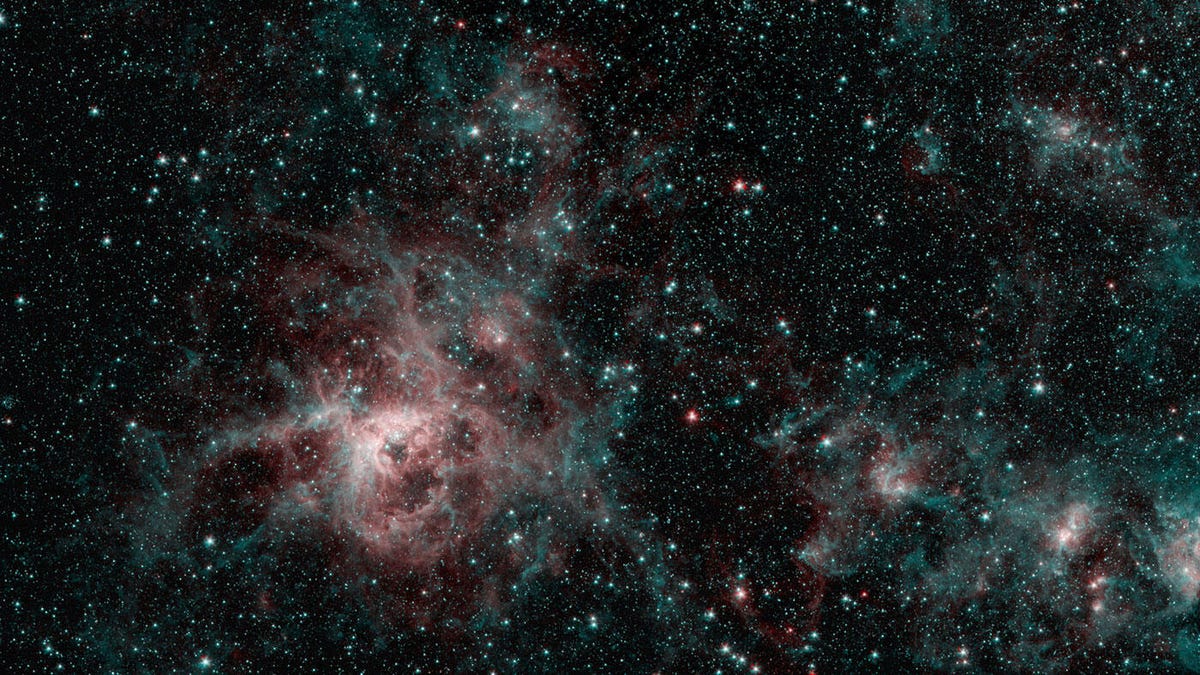NASA's retiring Spitzer telescope snaps wild last view of Tarantula Nebula
The Spitzer Space Telescope is riding off into the sunset, but not before gifting us with a gorgeous nebula glamour shot.

Spitzer's infrared vision shows off the wispy nature of the Tarantula Nebula.
It's been a good journey. NASA will decommission its Spitzer Space Telescope on Jan. 30, but not without a little celebration of 16 years of incredible infrared views of our universe. The space agency released a fresh Spitzer image of the Tarantula Nebula on Monday.
NASA went back to the telescope's beginnings when it chose to revisit the Tarantula, which was one of Spitzer's first observation targets. "That region has a lot of interesting dust structures and a lot of star formation happening, and those are both areas where infrared observatories can see a lot of things that you can't see in other wavelengths," said Spitzer project scientist Michael Werner.
The Tarantula Nebula gets its nickname from its spidery filaments of gas that resemble arachnid legs reaching out across the cosmos.
Spitzer's infrared data gives us a good look at the nebula's structure. "The red regions indicate the presence of particularly hot gas, while the blue regions are interstellar dust that is similar in composition to ash from coal or wood-burning fires on Earth," NASA said.
Spitzer launched in 2003 and long outlived its original planned mission. The space telescope studied distant galaxies, interstellar dust and exoplanets. Its legacy of data and beautiful views of the cosmos will live on.
Originally published 9:33 a.m. PT

